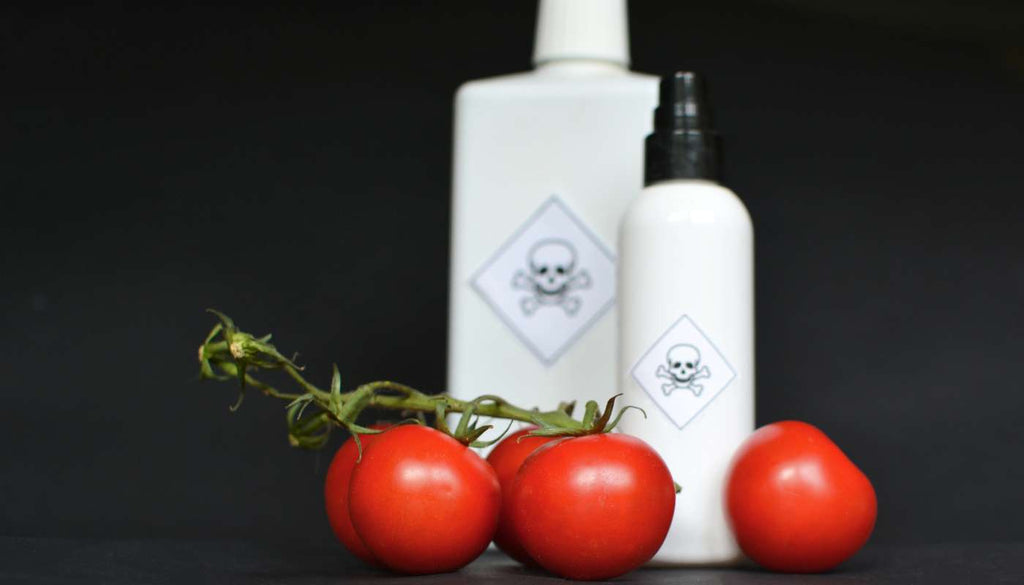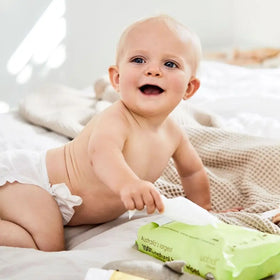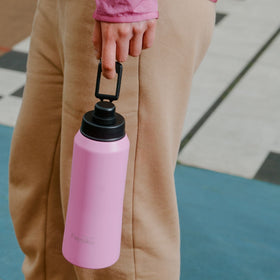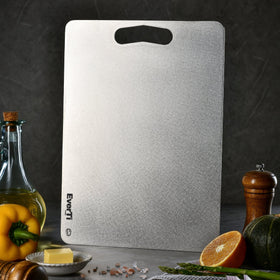
What Are Hormone Disruptors (And How Do You Avoid Them)?
Hormone disrupting chemicals are all around us. They can be in the air we breathe. You'll find them in the skincare you use. They're even in the food that we eat. So what exactly are hormone disruptors, and what are they doing to our bodies?

What are hormone disruptors and how do they work?
Hormone disruptors (also called endocrine disruptors or EDs in the scientific literature), are chemicals that act on your hormonal system. They usually work in one of three ways:- Fool the body into thinking that they’re naturally occurring hormones. Some examples are:
- Oestrogens (the female sex hormone)
- Androgens (the male sex hormone)
- Thyroid hormones, which control your energy levels and affect many other systems in the body
- Block the natural flow of hormones
- Interfere with the way your body makes its own hormones. They might affect the liver or other organs that regulate your system.
Endocrine disruptors can have long term, even permanent effects. A foetus is especially vulnerable, because this is a time of such rapid development. Research has shown that early environmental exposures in utero can cause chronic diseases and disorders during adulthood. It's also possible for these genetic changes to be passed on to subsequent generations. Hormone disruptors can cause cancer and infertility in men and women. They may be linked to early puberty in children, as well as other problems. However, researching the effects of hormone disruptors is difficult. Different dosages, different environmental factors, how old you are when you're exposed, how long it takes for effects to appear after exposure. All of these factors make research extremely complicated.
Common hormone disruptors
Many commercial household products contain endocrine disruptors. Food and drink packaging can contain endocrine disruptors. And of course, there are hormone disruptors in polluted air and can affect you through skin contact. So what are the some of the common chemicals linked to hormone disruption?
Phthalates
Phthalates make plastics more flexible. They’re in many products, not just plastics and vinyl. Personal care products with solvents can have them too (especially fragrances). They’re known to cause fertility problems in males. They’re also toxic to the liver, kidneys, thyroid and immune system.
BPA (Bisphenol A)
Polycarbonate plastic (recycle numbers 3 and 7) have BPA. A 2004 study done in the USA found BPA in the urine of 93% of the 2,517 people studied. Some were as young as six years old. BPA usually makes its way into the body when you heat up your food or drink in a container that uses BPA in the plastic. Acidic food (like tomato sauce) can cause the BPA to leach into your food. Some dental sealers and composites contain it as well. And it's not just BPA. As consumers have become aware that BPA is an issue, manufacturers have been switching to alternative Bisphenols, like BPS. They then proclaim that their product is "BPA free" but neglect to mention the BPS! Get to know your plastics, and choose safer plastics, or avoid plastic altogether where you can.
Heavy metals
We all know that lead and mercury are highly toxic, partly because of their effects on the hormonal system. Other heavy metals, such as cadmium, lead and nickel can also cause major problems. You might think that this problem has been solved, but a 2017 study found unacceptably high levels of lead and nickel in coffee pods. Some even contain low levels of phthalates for a double whammy.
Parabens
Some skin and body care products use parabens as preservatives. They’re easily absorbed through the skin and can mimic oestrogen in the body. When you’re reading labels, avoid ingredients ending in ‘paraben’, such as methylparaben, proplyparaben, and isopropylparaben.
Flame retardants
Flame retardants are full of toxic chemicals. Brominated flame retardants affect the thyroid and may also interfere with the oestrogen system.
Pesticides and insecticides
There are around 105 pesticides that are also endocrine disruptors. Even old ones that aren’t in use anymore, such as DDT, still hang around the environment affecting wildlife. In humans they can cause male infertility and breast and prostate cancers, among other problems.
What you can do
It’s easy to read scaremongering articles and decide that everything is toxic and there’s nothing you can do to protect yourself and your family. However, there are some simple steps you can take that will greatly reduce your exposure.
Wash your hands
Wash your hands frequently, especially before you eat. Teach your children to wash their hands properly (rub soap over them for at least 20 seconds and then rinse thoroughly). If you live in a big city, wash your hands as soon as you come home. This simple step will wash many contaminants down the drain. Just avoid anti bacterial soaps, which don’t really help and can be toxic.
Avoid fragrances
When you’re choosing soap, go for the unscented version or choose products scented with essential oils. Most synthetic fragrances contain phthalates. And you never know which ones, because fragrance ingredients are trade secrets. Companies don’t have to disclose them. You can keep your house fresh by opening windows for extra ventilation and emptying the rubbish often. (Keep an eye out for scented garbage bags and the like too.) When you go to get your car cleaned, ask them not to give it that ‘new car smell’. Or better still, clean it yourself using natural products and essential oils if you want a scent.
Dust and vacuum often
Flame retardants can be found in a lot of furniture and electronics, and even baby products. It’s often shed as dust that accumulates in your house. Get a vacuum with a HEPA filter, and dust regularly with a damp cloth, to minimise your family’s contact with this stuff. For further reading, check out our 'detox your home' series of articles.
Steer clear of plastics
Store your food and drink in glass and stainless steel containers. If you can’t swap all your plastic containers right now, that's okay. Just don’t use them to store fatty or acid food, don't put hot food in them, and never ever microwave them. Protect your food with reusable beeswax coated cloth wraps or the wonderful Agreena silicone wraps. If you’re taking your lunch, put your sandwich in a reusable lunch bag instead of plastic.
Be cautious about cans
Many cans are lined with BPA to stop them from corroding. Sometimes new chemicals are used instead, which might not be any safer. Look for glass jars instead, or cans that are BPA free. Or if possible, avoid cans altogether and go with fresh or dried.
Watch what you eat
Some foods, like soy, contain phytoestrogens, which are natural plant compounds that are weak estrogen mimics. More research needs to be done to determine whether this is a problem. In the meantime, eat a good diet. Eat whole foods, not processed foods. Buy organic vegetables as much as you can to avoid pesticide residues. If you don't have access to organic vegetables, then try to get vegetables with least pesticides. (It’ll be better for the environment too.) Go for the 'Clean 15' – avocados, sweet corn, pineapples, cabbages, onions, frozen sweet peas, papayas, mangoes, eggplants, honeydew melons, kiwis, cantaloupes, cauliflower, and broccoli. And choose 'spray free' wherever you can.
Use green cleaners
Look for safe laundry detergents and household cleaners. Baking soda and vinegar do a great job cleaning up stains and messes. Many commercial products don’t list the ingredients, so you never know what’s in them. In addition to exposure through skin contact, these products can pollute the air inside your home as well.
Want to avoid toxic chemicals from your family and home? Read more of our articles on Natural Home.










